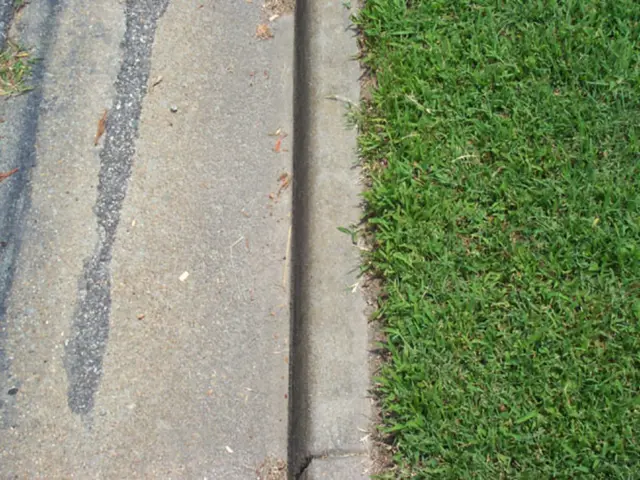Differentiating Age Spots from Skin Cancer: Key Signs to Watch Out For
A Realistic Guide: Age Spots, Skin Cancer, and Actinic Keratosis
Let's dive into the world of age spots, skin cancer, and actinic keratosis - three conditions that can confuse the heck out of us! We'll discuss their differences, symptoms, diagnoses, and treatments to help you navigate this skin conundrum.
The Differences
Age spots, skin cancer, and actinic keratosis are three skin conditions that appear similar but have crucial differences. Understanding these differences can help you determine when to seek professional advice.
Age Spots
Age spots, also known as liver spots, are harmless patches that appear darker than the surrounding skin. They are generally flat, cruised, and smooth, with well-defined borders. They develop when the body produces excess melanin, which causes the skin to darken due to sun exposure. Age spots usually manifest in middle age and are more common on light skin.
Skin Cancer
Skin cancer is a type of cancer that, like age spots, is most likely to occur in areas exposed to the sun. It results from damage to skin cells caused by UV radiation or other factors. Skin cancer can spread to other parts of the body and is harmful.
The three common types of skin cancer are basal cell carcinoma, squamous cell carcinoma, and melanoma. Actinic keratosis is another skin condition that can be mistaken for an age spot, as it also occurs due to sun damage.
Actinic Keratosis
Actinic keratosis is a precancerous growth that can develop into skin cancer if left untreated. It appears as rough, scaly patches or bumps, typically pink, brown, or red. Actinic keratosis is usually (though not always) found on sun-exposed areas.
Symptoms Comparison
Compare the symptoms of age spots, skin cancer, and actinic keratosis to distinguish between them.
Age Spot Symptoms
- Flat and smooth
- Yellow, brown, or gray
- Defined with clear borders
- Varies in size from a few millimeters to centimeters
- Appears on sun-exposed areas such as face, hands, shoulders, feet, arms, back
Age spots may fade in winter and become more prominent in summer due to increased sun exposure.
Skin Cancer Symptoms
Skin cancer symptoms can differ depending on factors like the type of skin cancer. Some signs that a skin growth may be cancerous include:
- Asymmetrical shape
- Changing size, color, or shape
- Multiple colors on the same spot
- Irregular edges
- Pain, itching, oozing, or bleeding
- Crusty or scaly patches
- Pale or yellow firm patches, similar to scars
- Raised, red patches
Early signs of actinic keratosis include:
- Raised, rough, or scaly patches
- Red, gray, pink, or skin-colored patches
- Flat, scaly patches that resemble age spots
- Scaly, rough bumps similar to acne
- Horn-like growths
- Pale or scaly patches on the lips
When to Contact a Doctor
Monitor any unusual changes on your skin and seek medical advice if there are signs of skin cancer or actinic keratosis. Early detection can improve treatment outcomes. If a mark on your skin:
- Changes in color, shape, size, or location
- Doesn't look like other marks on your skin
- Itches, crusts, or scabs and doesn't heal within 4 weeks
Diagnosis and Treatment
A doctor will visually examine a suspected age spot, actinic keratosis, or skin cancer and may perform a skin biopsy to confirm the diagnosis.
The treatment for age spots is usually cosmetic, while skin cancer and actinic keratosis require medical attention. Treatment options for skin cancer and actinic keratosis can include topical therapies, radiation therapy, chemotherapy, immunotherapy, or targeted therapy.
Stay informed, stay protected, and remember that early detection and prompt action are essential. Keep those sunscreen levels high and regularly check your skin - it could save your life!
- Actinic keratosis, a precancerous growth, can be mistaken for an age spot due to their similar sun-induced origins, but unlike age spots, actinic keratosis can develop into skin cancer if left untreated.
- In dermatology, seniors are at a higher risk of developing skin conditions like age spots, skin cancer, and actinic keratosis, as they have accumulated more years of sun exposure.
- Science and medical advancements in oncology have provided various treatment options for skin cancer, such as targeted therapy, chemotherapy, and immunotherapy, potentially saving a patient's life with prompt action.
- Health and wellness emphasize the importance of skin care and regular self-examinations to identify and treat skin-care issues like age spots, skin conditions, or medical conditions, such as skin cancer and actinic keratosis, in their early stages.
- Although age spots are generally harmless, their appearance and symptoms can be closely similar to those of skin cancer or actinic keratosis, making it essential to consult with a medical professional if there are any concerns about skin-related conditions.








